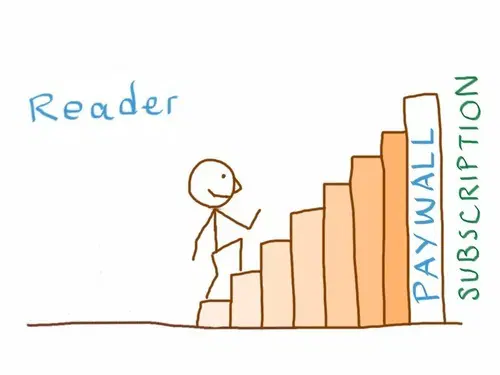Introduction: The Shift from Ad Revenue to Subscription Models
The traditional business model of journalism—where news organizations relied heavily on advertising revenue—has been in decline for over a decade. With the rise of digital media, tech giants like Google and Meta have absorbed a significant portion of global advertising revenue, leaving news publishers struggling to sustain high-quality journalism.
As a result, many news organizations have shifted to a subscription-based model, where readers pay for premium content. However, this shift has created a dilemma:
- Will audiences pay for news in an age of free content?
- Can paywalls ensure financial sustainability without restricting access to critical information?
- How does this impact the role of journalism in a democratic society?
In 2025, the subscription economy has become the primary survival strategy for major news outlets. But is it sustainable? Or will it deepen the divide between those who can afford quality news and those who can’t?
The Rise of Paywalls: Why News Organizations Are Charging for Content
1. The Advertising Collapse and the Need for Direct Reader Support
Traditional print newspapers relied on classified ads, display ads, and sponsorships for decades. However, the digital era saw advertisers shifting to social media and search engines, reducing news organizations’ revenue streams.

- In 2025, more than 75% of global digital ad revenue is controlled by Google, Facebook, and Amazon.
- Over 50% of U.S. newspapers have introduced paywalls, up from just 10% in 2010.
With ad revenue no longer sufficient, subscription models emerged as a lifeline.
2. The Success Stories: How Leading News Brands Monetized Journalism
Major publishers have successfully implemented tiered subscription models, offering exclusive content, in-depth reports, and personalized newsletters.



These success stories show that readers are willing to pay for high-quality, investigative journalism.
The Challenges of a Paywall-Driven Journalism Model
While paywalls help sustain quality journalism, they also present three major challenges:
1. The Information Gap: Is Quality News Becoming a Luxury?
As more outlets implement strict paywalls, a two-tier information system is emerging:
- The wealthy and educated can afford premium content.
- The general public relies on free, low-quality, or biased news sources.

- In countries with lower income levels, paywalled content limits access to reliable information.
- Political and financial news behind paywalls reduces public participation in democracy.
If high-quality journalism becomes a luxury product, misinformation and bias will fill the gap left by inaccessible reporting.
2. The “Subscription Fatigue” Problem
Consumers are already paying for Netflix, Spotify, and cloud services. Asking them to pay for multiple news subscriptions can lead to subscription fatigue, causing many to opt out of paid journalism altogether.

3. The Rise of Alternative Revenue Models: Can Journalism Survive Without Paywalls?
Some news outlets are exploring new business models to sustain journalism:
- Micropayments: Paying per article rather than monthly subscriptions.
- Crypto-based journalism: Decentralized platforms rewarding readers for engagement.
- Nonprofit funding: Organizations like ProPublica rely on philanthropic donations instead of subscriptions.

Conclusion: Can Paywalls and Press Freedom Coexist?
The shift to subscription-based journalism ensures financial survival but also raises ethical concerns about accessibility and media diversity. To thrive, news organizations must:



The challenge for 2025 and beyond is clear: how to make quality journalism profitable without making it inaccessible.

